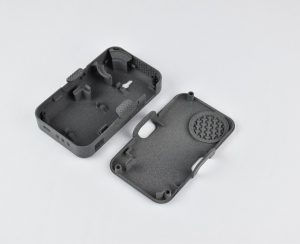Do you want to improve your reactivity to market demands, implement more flexibility in your process and optimize your costs? Scalable manufacturing can help you with these crucial aspects. Additive manufacturing is particularly adapted to the scalability of your business and we’ll see with you how this manufacturing can become your best ally.
Benefit from better lead times and reduce your time-to-market. Using additive manufacturing will speed your manufacturing process. Instead of developing time-consuming and costly molds before starting the manufacturing process, with 3D printing, everything can be done in a few days.
Moreover, keep in mind that there is no minimum order quantity, you are free to adapt your production to the variability of demand. From prototypes to mass production: produce what you need when you need it with Sculpteo, with the exact quantity you need. You will see that this manufacturing method will also help you optimize your costs!
- Optimize your parts by rethinking your products design
Thanks to our Sculpteo Studio team, use the full potential of Design for Additive and get the freedom and flexibility to develop your electronics projects! Sculpteo Studio’s team is here to support you at any stage of your project, from helping you identify the 3D printing opportunities of your company to the manufacturing process of your finished parts. Get support from experienced 3D printing experts from prototyping to production and learn how to think additive to create electronic parts with integrated assembly and smart design or structures.
- Access perfectly adapted materials
Using materials such as Nylon PA12 or Ultrasint® PA11 are perfect to create custom housing for your electronic devices. These are perfect options for large scale manufacturing.
Ultrasint® PA11 is a bio-derived powder with exceptionally high toughness. This material has the particularity of offering high ductility and impact strength for your electronic applications. You can also choose Nylon PA12 which is interesting for its high precision and low cost. The good mechanical properties of this nylon material will be perfect for more advanced additive manufacturing projects and can even substitute injection molding plastics.
At Sculpteo, we are now offering you the possibility to manufacture your ESD-safe parts. If you are prototyping or producing a project where electrostatic discharging safety is critical, our Ultrasint® PA11 ESD material will be a perfect choice. What is called “electrostatic discharge” (ESD) is the flow of electricity between two electrically charged parts caused by contact. Electrostatic Discharges are a real problem and can damage sensitive electronic components. It can also lead to the alteration of magnetic media and set off fires or explosions in flammable environments! ESD is a big concern for the electronic industry, and being able to manufacture ESD-safe part is a real advantage.
Ultrasint® PA11 ESD is a bio-derived material, appearing to be a perfect choice for increased process safety in advanced applications. With its interesting mechanical properties, this material offers new possibilities for a wide range of new applications, especially for the electronics sector. Indeed, with its low resistivity, Ultrasint® PA11 ESD is reducing the risk of electrostatically induced damage or failures, the material does not accumulate static electricity and can come in contact with electronic components without running any risk. The surface resistivity of Ultrasint® PA11 ESD is lower than traditional electrostatic dissipating materials. You can now make the most of the advantages of both additive manufacturing and electrostatic discharge properties. For electronic housing, electronic jigs and fixtures, this material is perfectly adapted. PA11 ESD also has other advantages and interesting mechanical properties such as high tensile strength and elasticity, which could help you create efficient tools. What are you waiting for? With this material, you can create parts combining superior mechanical and thermal characteristics with outstanding electrostatic discharging properties. Get your parts 3D printed with Ultrasint® PA11 ESD by uploading your 3D file on our 3D printing service right now. It will only take a few clicks and you will get an instant quote

- An easy process, for reliable and quality results
At Sculpteo we have the experience and the technologies to help your business grow and face new challenges. For more than 10 years, Sculpteo has supported businesses in a variety of industries to make the most of 3D printing. electronic manufacturing is not an exception, and we know we can partner with your company to bring you further, using innovative manufacturing. Enjoy our quality control
Already have a 3D file, such as an STL file? Feel free to upload your 3D model on our online 3D printing service. If you are now considering using additive manufacturing to develop your business but have no clue how to get started, contact us, our team is waiting to hear from you.


 Connect with Google
Connect with Google Connect with Facebook
Connect with Facebook
